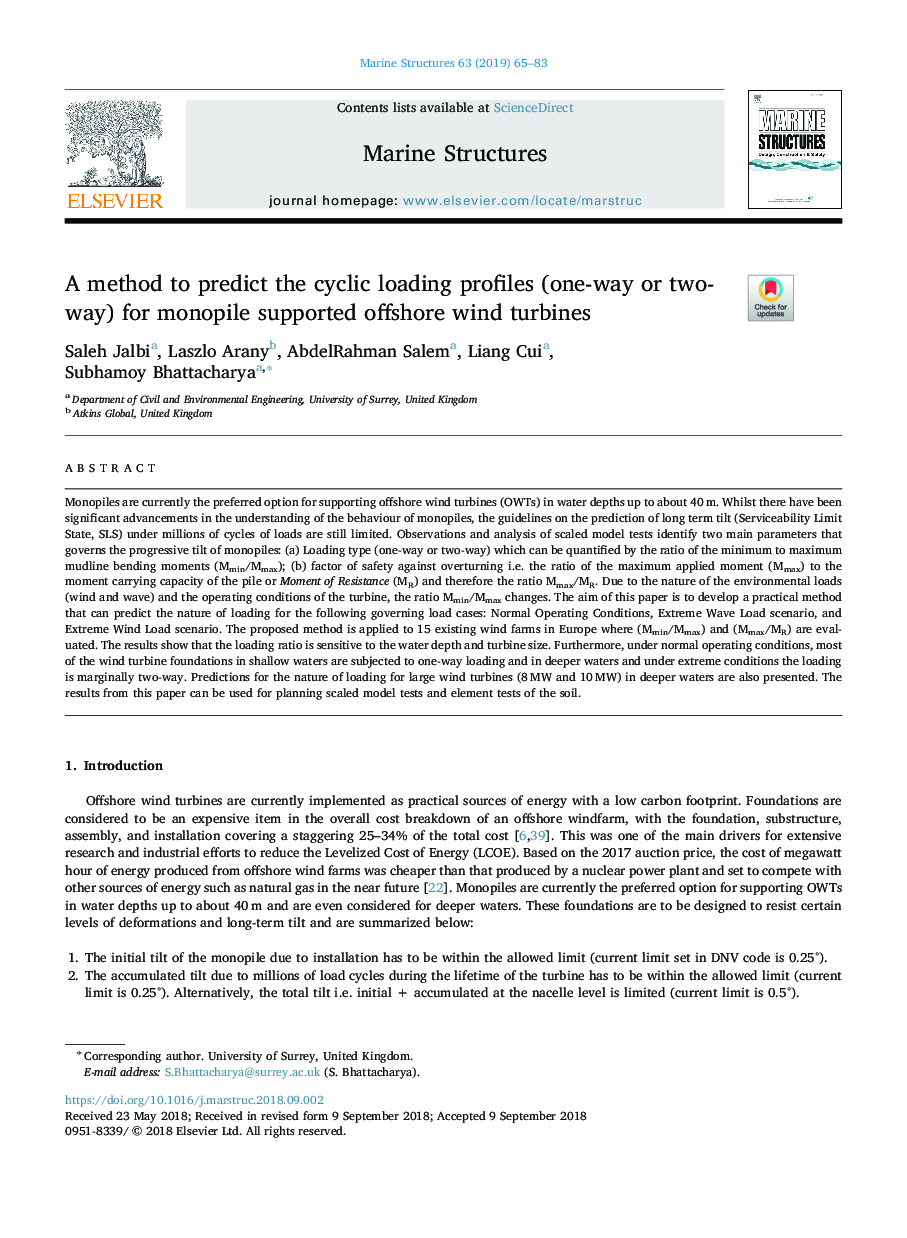| Article ID | Journal | Published Year | Pages | File Type |
|---|---|---|---|---|
| 10225462 | Marine Structures | 2019 | 19 Pages |
Abstract
Monopiles are currently the preferred option for supporting offshore wind turbines (OWTs) in water depths up to about 40â¯m. Whilst there have been significant advancements in the understanding of the behaviour of monopiles, the guidelines on the prediction of long term tilt (Serviceability Limit State, SLS) under millions of cycles of loads are still limited. Observations and analysis of scaled model tests identify two main parameters that governs the progressive tilt of monopiles: (a) Loading type (one-way or two-way) which can be quantified by the ratio of the minimum to maximum mudline bending moments (Mmin/Mmax); (b) factor of safety against overturning i.e. the ratio of the maximum applied moment (Mmax) to the moment carrying capacity of the pile or Moment of Resistance (MR) and therefore the ratio Mmax/MR. Due to the nature of the environmental loads (wind and wave) and the operating conditions of the turbine, the ratio Mmin/Mmax changes. The aim of this paper is to develop a practical method that can predict the nature of loading for the following governing load cases: Normal Operating Conditions, Extreme Wave Load scenario, and Extreme Wind Load scenario. The proposed method is applied to 15 existing wind farms in Europe where (Mmin/Mmax) and (Mmax/MR) are evaluated. The results show that the loading ratio is sensitive to the water depth and turbine size. Furthermore, under normal operating conditions, most of the wind turbine foundations in shallow waters are subjected to one-way loading and in deeper waters and under extreme conditions the loading is marginally two-way. Predictions for the nature of loading for large wind turbines (8â¯MW and 10â¯MW) in deeper waters are also presented. The results from this paper can be used for planning scaled model tests and element tests of the soil.
Related Topics
Physical Sciences and Engineering
Engineering
Civil and Structural Engineering
Authors
Saleh Jalbi, Laszlo Arany, AbdelRahman Salem, Liang Cui, Subhamoy Bhattacharya,
